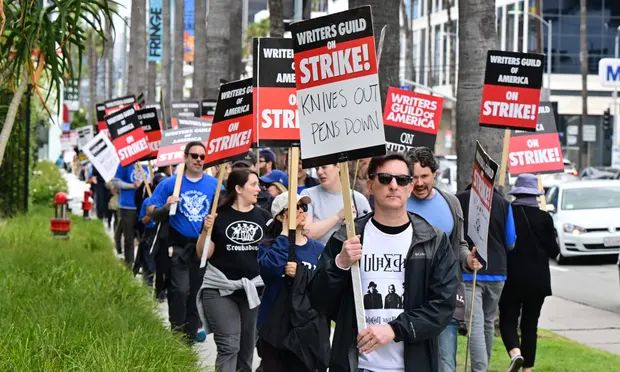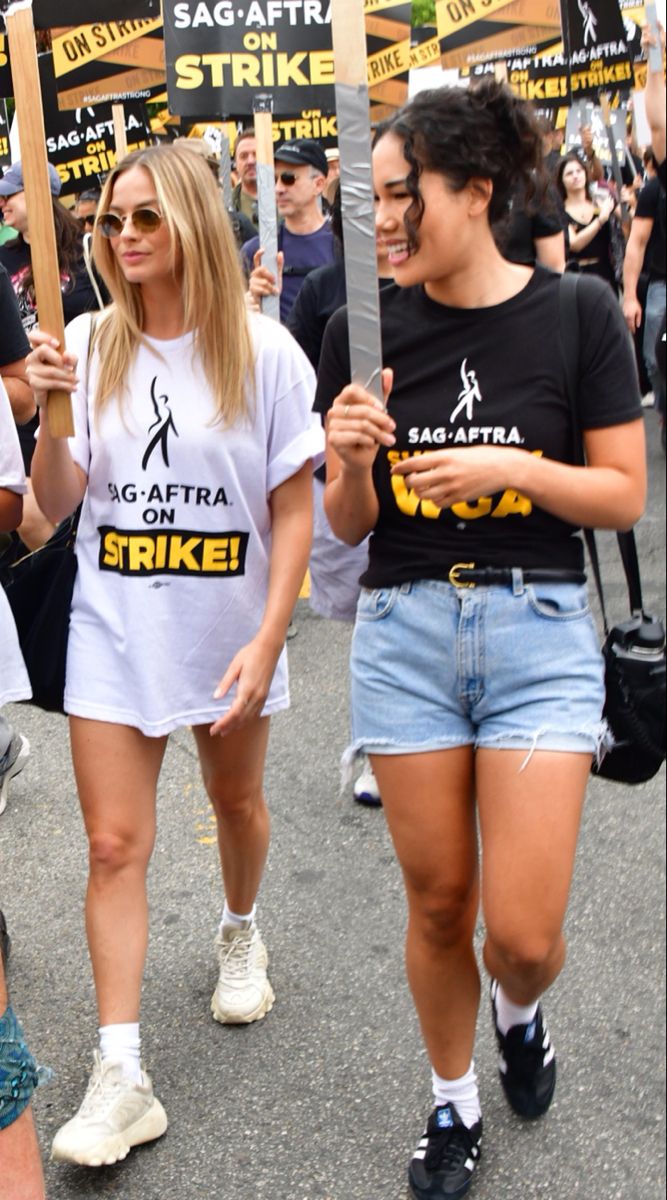The conclusion of the Hollywood strikes in late 2023 marked a significant turning point for the entertainment industry.

After months of intense labor disputes, actors and writers returned to work, with agreements brokered between unions and studios on terms surrounding pay, benefits, working conditions, and, notably, the evolving challenges posed by artificial intelligence (AI). However, while the immediate aftermath of the strikes brings a sense of resolution, it also signals the beginning of a new phase for Hollywood and the broader entertainment landscape. The industry is now at a crossroads, facing critical questions about its future direction, economic models, creative output, and the role of technology in shaping content production. In this piece, we explore what’s next for Hollywood in the wake of these historic strikes.
The Economic Impact: Rebuilding and Reshaping the Industry
The strikes—both the Writers Guild of America (WGA) and the Screen Actors Guild-American Federation of Television and Radio Artists (SAG-AFTRA)—had a profound economic impact on Hollywood. According to estimates, the labor stoppages resulted in a loss of approximately $5 billion, affecting not only the major studios and production companies but also thousands of workers in ancillary sectors, such as makeup artists, sound engineers, crew members, and others who rely on production schedules for their livelihoods.
With production finally resuming, the industry faces the daunting task of rebuilding its economy. The backlog of delayed TV shows, movies, and streaming content is immense, and studios will need to rapidly ramp up production to catch up on lost time. However, even as work resumes, the landscape is markedly different. The strikes exposed systemic challenges within Hollywood, including concerns over pay inequality, the erosion of traditional labor standards, and the uncertain future of streaming as a business model.
The long-term effects of these shifts are still unclear, but there’s a strong likelihood that the strike negotiations will usher in changes that reshape how workers in Hollywood are compensated. Expect to see more significant discussions around residuals, with an increasing focus on revenue generated by streaming platforms and how to ensure that creators and performers receive fair compensation for content viewed on digital platforms. Given the increasing dominance of streaming services like Netflix, Disney+, and Amazon Prime, traditional revenue-sharing models may no longer be sufficient to meet the needs of workers who once thrived on syndicated reruns and box-office revenue.
The Rise of AI and Technology: A Double-Edged Sword
One of the key issues raised during the strikes was the growing impact of artificial intelligence (AI) on the entertainment industry. Both writers and actors expressed concerns about how AI technologies might be used to undermine their creative and financial livelihoods. Writers worried about the potential for AI-generated scripts to replace human storytellers, while actors feared the use of AI to create digital likenesses of performers without their consent or compensation.
In response to these concerns, the recently negotiated agreements include provisions that aim to safeguard against the exploitation of AI. Writers and actors won significant victories, ensuring that AI cannot be used to replace their work without proper compensation and control. However, the threat of AI in Hollywood is far from over. As AI technologies continue to evolve, they are likely to play an even more prominent role in content creation, whether through script generation, special effects, or even virtual performances by AI-generated characters. The challenge moving forward will be balancing the innovative potential of AI with the rights and fair compensation of creative professionals.
Despite the disruptions, AI also holds the potential to streamline production processes and open new doors for content creation. For instance, AI tools can help filmmakers with tasks like editing, sound design, and CGI animation, allowing them to be more efficient and creative. On the other hand, studios and content creators will need to develop ethical guidelines to ensure that the use of AI complements, rather than undermines, the contributions of human talent.
Changing Distribution Models: Streaming and Beyond
The strike underscored the importance of the ongoing shift from traditional television and film distribution to streaming platforms. The rise of services like Netflix, Apple TV+, and Disney+ fundamentally changed how movies and shows are consumed. While streaming has brought unprecedented access to content, it has also disrupted the business model that previously allowed actors, writers, and other entertainment professionals to earn a living through syndication, reruns, and box-office returns.

In the wake of the strike, the entertainment industry is likely to see a continued reevaluation of the streaming model. While streaming remains a lucrative market, many industry experts argue that the current approach—focusing on a high volume of content without corresponding guarantees of profitability—has created an unsustainable environment. Some experts predict that we will see a “streaming consolidation,” where many platforms will either merge or go out of business. The era of seemingly endless content churn may give way to a more curated, quality-focused approach, with fewer but more compelling offerings.
The advent of artificial intelligence will also play a major role in transforming distribution. AI could help streaming platforms personalize content recommendations more accurately, improving user experiences. But this could also deepen the problem of algorithmic gatekeeping, with AI determining what content is seen by audiences, further sidelining diverse voices in favor of content that meets the algorithm’s favored patterns.
Reaffirming Creative Control and Authorship
One of the central tenets of the strike was the fight for greater creative control and a more equitable distribution of profits. For years, actors and writers have been asking for a fairer share of the ever-expanding profits generated by streaming and digital platforms. The strike highlighted the tension between creative talent and the powerful corporations that control distribution channels.
In the post-strike world, creative professionals may find that they have more power to negotiate better deals, thanks to the increased visibility of these labor struggles. There is potential for more independent content creators to carve out new spaces in the entertainment ecosystem, leveraging platforms like YouTube, TikTok, and Substack. Additionally, the rise of virtual reality (VR) and augmented reality (AR) experiences could lead to new forms of storytelling, giving writers, actors, and directors new mediums in which to showcase their work.
The strike also underscored the importance of writers and actors as fundamental contributors to the creative process. As Hollywood moves forward, expect a greater emphasis on the value of human creativity, particularly in an era where AI and automation threaten to dominate much of the industry.
The Path Forward: Unity and Sustainability
The Hollywood strikes were a powerful reminder that labor solidarity can result in significant changes. However, the road ahead remains uncertain, as the industry must reconcile the conflicting interests of studios, content creators, and consumers. To build a sustainable future, Hollywood must embrace collaboration over competition, fairness over exploitation, and creativity over corporate greed.
Moving forward, the focus will need to be on building a more transparent and equitable industry. This includes revisiting the financial models of major studios, exploring new revenue streams that benefit workers, and incorporating the ethical use of technology. The industry must also invest in its people—not only in terms of financial compensation but also by nurturing creativity and supporting emerging talent.
As Hollywood navigates this new era, one thing is clear: the strikes may be over, but the conversation about fairness, creativity, and the role of technology in entertainment is just beginning.


